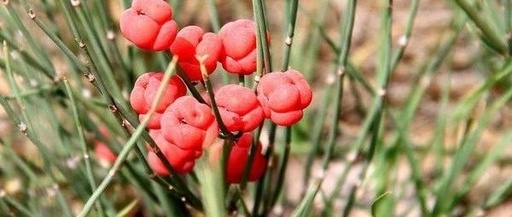Effective Exterior Releasing Techniques
Exterior releasing is a method used in Traditional Chinese Medicine (TCM) to treat externally contracted diseases. However, in cases of internal injuries where there are exterior symptoms, employing exterior releasing techniques can often yield unexpectedly effective results—regardless of how long the illness has persisted. A key principle in TCM is to address exterior symptoms first, which is often overlooked today. Below, I will provide some examples in this regard.
Example 1
On March 11, 2010, a 68-year-old female patient presented with a complaint of chest tightness and discomfort for 4 months. Four months prior, due to family issues, she suddenly experienced chest tightness, shortness of breath, dizziness, poor sleep, belching, and loss of appetite. Currently, she also suffers from headaches that worsen at night, extreme sensitivity to cold, loose stools occurring three times a day, a feeling of heaviness in the anus, and abdominal pain upon waking that leads to diarrhea.
At first glance, this condition appears to be a case of Liver Qi Stagnation (肝郁证, gan yu zheng), and previous treatments focused on this diagnosis without significant improvement over a month.
This patient indeed exhibited symptoms of Liver Qi Stagnation, but she also had exterior symptoms. The prescription was: Ma Huang (Ephedra) 15g, Fu Zi (Aconite) 30g, Xi Xin (Asarum) 15g, Gan Jiang (Dried Ginger) 30g, Zhi Gan Cao (Honey-Fried Licorice) 20g, Bai Shao (White Peony) 30g, Bai Zhu (White Atractylodes) 15g, Fang Feng (Siler) 15g, Chen Pi (Dried Tangerine Peel) 15g, Rou Gui (Cinnamon) 15g, and Fu Ling (Poria) 30g. Two doses were prescribed. The patient was instructed to take the medicine warm to induce sweating and was informed that once sweating occurred, her condition would significantly improve after two doses. Indeed, two days later, the patient happily reported a substantial reduction in all symptoms.
This formula utilized Ma Huang and Fu Zi to release the exterior, while Si Ni San (Four Rebellious Herbs) warmed the spleen and kidneys, and the Painful Diarrhea Formula (痛泻要方, tong xie yao fang) addressed the liver and tonified the spleen.
Example 2
On March 10, 2009, a 72-year-old female patient presented with a complaint of poor appetite for nearly a year. She had no desire to eat, and even a small amount of food caused bloating and discomfort. The patient was very thin, lacked energy, frequently experienced headaches, shoulder pain, sensitivity to wind, and discomfort in the neck. Her bowel movements occurred every 3-4 days and were dry, with a pulse that was floating and tight.
The patient initially sought treatment from Western medicine for a long time without effect, then turned to TCM, and ultimately spent over a month hospitalized in a local TCM hospital with no improvement from combined treatments.
Although the patient was eager to treat her stomach issues to resolve her inability to eat, directly treating the stomach would not yield good results, as evidenced by her previous treatment failures.
The key issue now was still the unresolved exterior symptoms. Once the exterior was resolved, her stomach would naturally improve. The prescription was: Ma Huang 10g, Gui Zhi (Cinnamon Twig) 10g, Bai Shao 10g, Sheng Jiang (Fresh Ginger), Da Zao (Jujube), Zhi Gan Cao 6g each, Xi Xin 10g, Fu Zi 10g, Bai Zhu 10g, and Fu Ling 10g, Ren Shen (Ginseng) 10g. After three doses, her appetite significantly improved, and she felt more energetic.
Example 3
On September 28, 2006, a 27-year-old male patient presented with unstable mental health for six months. Since his girlfriend broke up with him six months ago, he often felt inexplicably depressed or anxious, frequently experienced headaches, occasional confusion, memory decline, vivid dreams, body pain after sitting for long periods, fatigue, dry mouth with unquenchable thirst, a sensation of a foreign body in the throat, poor appetite, and bowel movements twice a day. His urine was yellow and foamy, and he experienced lower back pain, along with allergic rhinitis. His tongue was pale red with a slightly swollen white coating, and his pulse was wiry and slightly thin.
The prescription was: Ma Huang 10g, Fu Zi 15g, Xi Xin 10g, Gui Zhi 10g, Bai Shao 10g, Zhi Gan Cao 6g, Huang Qi (Astragalus) 20g, Bai Zhu 12g, Fu Ling 15g, Dang Shen (Codonopsis) 12g, Chai Hu (Bupleurum) 10g, Sheng Ma (Cimicifuga) 6g, Chen Pi 10g, Zhi Ke (Bitter Orange) 10g, Sheng Jiang 15g, and Da Zao 6 pieces. I first prescribed a dose of medicine and instructed him to induce sweating at home.
The next day, he came back smiling, saying it was miraculous; he felt much better. After taking two more doses, his six-month-long strange illness was resolved.
Although the patient had many complex symptoms, including mental health issues and signs of spleen and kidney deficiency, his main complaint (primary suffering) was mental. Should the prescription focus on tonifying the liver and spleen and kidney?
No. Regardless of the illness, the basic principle is to resolve the exterior first (unless there is an urgent internal issue that requires immediate treatment). After resolving the exterior, we can address the remaining symptoms.
In many cases, once the exterior is resolved, other symptoms may also improve, which is why exterior releasing often yields unexpected results.
In this patient, the symptoms of frequent headaches and body pain after sitting for long periods indicated exterior symptoms. Therefore, using Gui Zhi Tang (Cinnamon Twig Decoction) combined with Ma Huang and Xi Xin to induce sweating achieved remarkable results.
Why do we say that headaches and body pain are exterior symptoms? In Tai Yang disease (太阳病, tai yang bing), there are three sets of symptoms: 1) fever and aversion to cold; 2) headache, body pain, joint pain, and stiffness in the neck; 3) floating pulse.
As the illness persists, the fever and aversion to cold may disappear (many patients may not even have these symptoms initially but unknowingly suffered from wind-cold), and the pulse may no longer be floating, but often only headache, body pain, joint pain, and neck stiffness remain, as seen in this case.
Some may ask: Can exterior symptoms persist for so long? Absolutely, they can last not only for six months but even for decades.
Why can exterior symptoms persist for so long? Take this patient as an example: a 28-year-old young man in the prime of his life would generally not develop chronic issues from a little wind-cold. However, after his breakup, his emotional state significantly declined, leading to a substantial decrease in his body’s resistance. At this time, exposure to wind-cold can easily lead to chronic issues that are difficult to resolve.
Can the symptoms of Liver Qi Stagnation, Spleen Deficiency, and Kidney Deficiency be resolved after releasing the exterior? Although this condition was triggered by a breakup, six months have passed, and the real issue is that he and those around him believe he has mental health problems, which is a form of self-doubt. Once sweating and exterior releasing are achieved, the headaches and body pains will resolve, and he will feel relaxed, leading to a significant improvement in mood, thus alleviating Liver Qi Stagnation. Of course, if the patient remains deeply entrenched in the emotional aftermath of the breakup, it will be difficult to treat. As for Spleen and Kidney Deficiency, these are due to the illness, and once the illness is resolved, he will naturally recover.
(Source: Yi San Sheng Blog, Ming Yi Open Class)


